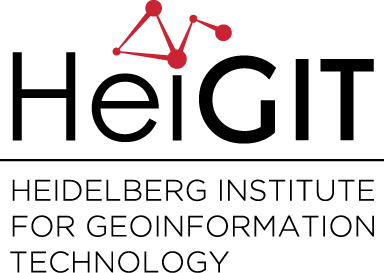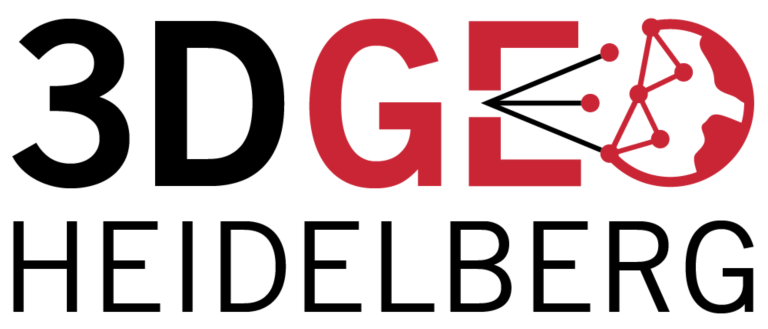Category: Software
-
HeiGIT presents ohsome Lab at FOSS4G 2019 Bucharest
This week, the annual conference FOSS4G (Free and Open Source Software for Geospatial) is taking place in Bucharest, Romania. The conference is organized by The Open Source Geospatial Foundation (OSGeo) and attracts over 1000 professionals from industry and academia each year. The HeiGIT Big Spatial Data Team will present the ohsome platform and related tools such as the…
-
Interested in time-dependent routing?
We are delighted to invite you to join a workshop on open-source routing with time-dependent restrictions, see http://giscienceblog.uni-hd.de/2019/04/17/project-tardur-starts-open-source-routing-with-time-dependent-restrictions/. The workshop is taking place on Friday before the State of the Map conference, 20th September 2019 in Heidelberg. It is free of charge and will last from 9:00 to 16:00 with a lunch break in between.…
-
New ORS Jupyter example about Fleet Scheduling for Disaster Response with ORS and VROOM
Routing optimization in a humanitarian context Routing optimization generally solves the Vehicle Routing Problem (a simple example being the more widely known Traveling Salesman Problem). A more complex example would be the distribution of goods by a fleet of multiple vehicles to dozens of locations, where each vehicle has certain time windows in which it can operate…
-
Constraints in multi-objective optimization of land use allocation – Repair or penalize?
Land is a spare resource so it makes sense to think about how to use it most efficiently. This leads to the problem of land use allocation under consideration of trade-offs. Multi-objective optimization algorithms are a tool quantify the trade-offs by estimating the Pareto-optimal land use allocations. Often, constraints in the solution space have to…
-
The Triangle of Shared Data Sources
Todays data production, maintenance, and use have changed in the last years. While these tasks were reserved to professionals until a few years ago, the situation has changed. This is no different in the geographical domain. Volunteers gather general information in Wikipedia and geographical information in OpenStreetMap. Twitter users provide not only text snippets but…
-
Usage of HELIOS for various applications
The Heidelberg LiDAR Operations Simulator (HELIOS) is an open source laser scanning simulation framework for interactive simulation and visualization of terrestrial, mobile and airborne laser scanning surveys. It can be flexibly used for teaching and training of laser scanning, development of new scanner hardware and scanning methods, or generation of artificial scan data sets to…
-
How to become ohsome part 5: Measuring numbers of users editing different OSM features
Besides dealing with a snake, making quality assessments, or generating comparable statistics, one needs to know how to handle the whole functionality provided by the ohsome API to really become ohsome. And to achieve exactly that, this blog presents the last missing entry point to the API from the current toolkit, namely the /users resource. With its help you can receive aggregated…
-
MapSwipe for Change Detection Analysis
The Humanitarian OpenStreetMap Team (HOT) , the Heidelberg Institute of Geoinformation Technology (HeiGIT) , and the wider MapSwipe Community started working on an MapSwipe extension to monitor changes in satellite imagery. The goal of the two-month project is to extend the app with new functionalities that would allow the users to compare two satellite images…
-
OSHDB: a framework for spatio-temporal analysis of OpenStreetMap history data
Earlier we published several blogposts introducing the ohsome platform and its parts (e.g. the ohsome API for example, which was often showcased here in the blog) and its backbone the OSHDB (very recently version 0.5 was published). A recent open access journal article gives even more background to the system, as shown below: Raifer, M,…
-
Projekt “TARDUR” startet: Open-Source-Routenplanung mit zeitabhängigen Beschränkungen
Zeitabhängige Sperrungen und Nutzungsbeschränkungen von Straßen werden bislang in keiner frei verfügbaren Software zur Routenplanung genutzt. In dem im März gestarteten Projekt “TARDUR – Temporal Access Restrictions for Dynamic Ultra-Flexible Routing” gehen die Universität Heidelberg und die Firma GraphHopper dieses Problem an. Das Projekt wird im Rahmen der Förderrichtlinie Modernitätsfonds (“mFUND”) mit insgesamt 100.000 Euro…
-
Project “TARDUR” starts: Open-source routing with time-dependent restrictions
Time-dependent restrictions and temporal road closures are so far not considered in any freely available software for route planning. Heidelberg University and the company GraphHopper aim to address this issue in their joint project “TARDUR – Temporal Access Restrictions for Dynamic Ultra-Flexible Routing”. The project started in March and is supported by the Federal Ministry…
-
OpenStreetMap History Database – version 0.5
The OpenStreetMap History Database (OSHDB) is what powers most of the functionality of HeiGIT’s ohsome platform. The ohsome API for example, which was often showcased here in the blog, is built on top of the OSHDB. Just recently, an open access software article about the OSHDB was published. Check it out to find out more…


